While I am obviously a great believer of sandbag training as a stand alone or heavily emphasized form of training, I am also a realist in that others may want to use sandbag training as a means to improve training they are already doing. With that said there is great benefit to adding some sandbag training to your Olympic lifting, HIIT, or kettlebell workouts, or whatever you are focusing upon in your training.
Of course it is more than just throwing a sandbag into your routine and expecting magic to happen. Just like any other form of strength training there has to be reason and purpose. That is why I selected three of what I have seen to be the biggest impact sandbag training drills from our Dynamic Variable Resistance Training program.
Bear Hug Squat
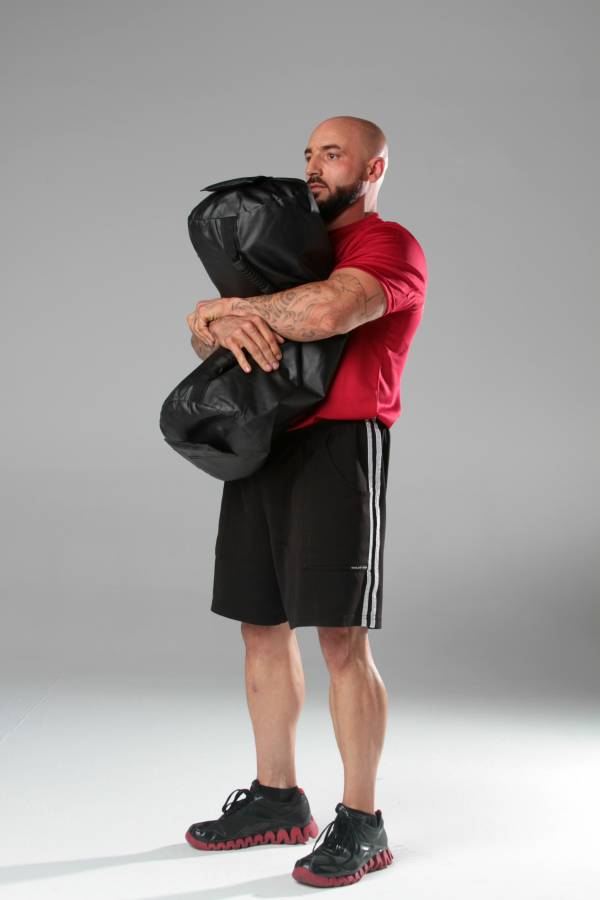
This exercise looks so simple that many completely underestimate its ability to have huge impact in a variety of means. Most coaches are shocked that when using appropriate loading (men: 140-160 pounds, women: 80-110) that this can be such a great strengthening exercise for the entire body. This comes from the fact the upper body is integrated to a high level into the exercise, but not to the degree that it becomes a large limiting factor. The range of motion the Bear Hug Squat allows for is also unparalleled. Where a lifter must typically already possess great flexibility to perform a drill, the Bear Hug Squat helps build that flexibility.
When you combine all these factors you have an exercise that will improve pulling exercises such as deadlifts and cleans, as well as power movements such as box jumps and other plyometrics. How to get the most out of it?
- Use a tempo of five seconds to lower yourself into the deep squat.
- Instead of the five second eccentric, use a four second pause at the bottom and try to explode. This removes momentum and will activate the hamstrings and glutes.
- Make sure to use the lats to create a very stable foundation.
Rotational Lunge
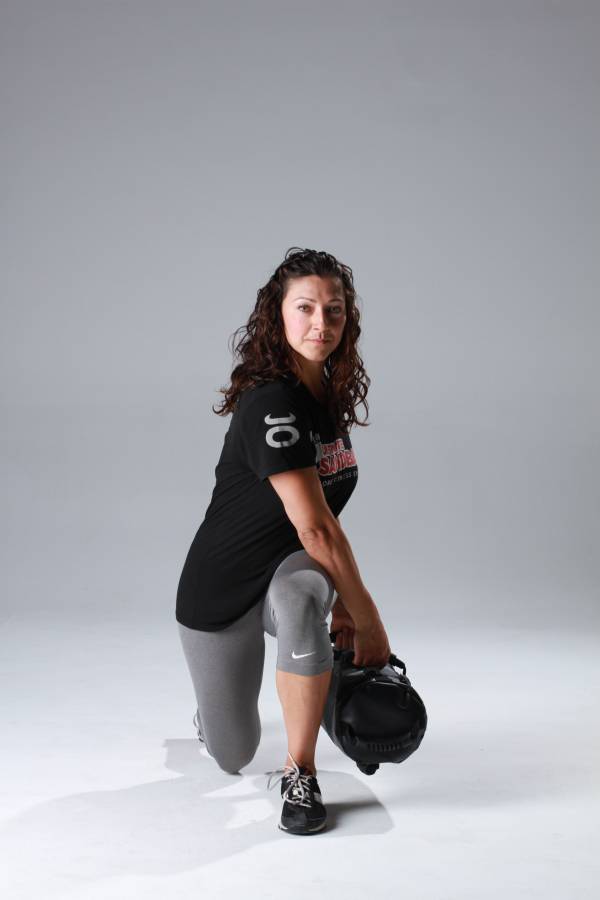
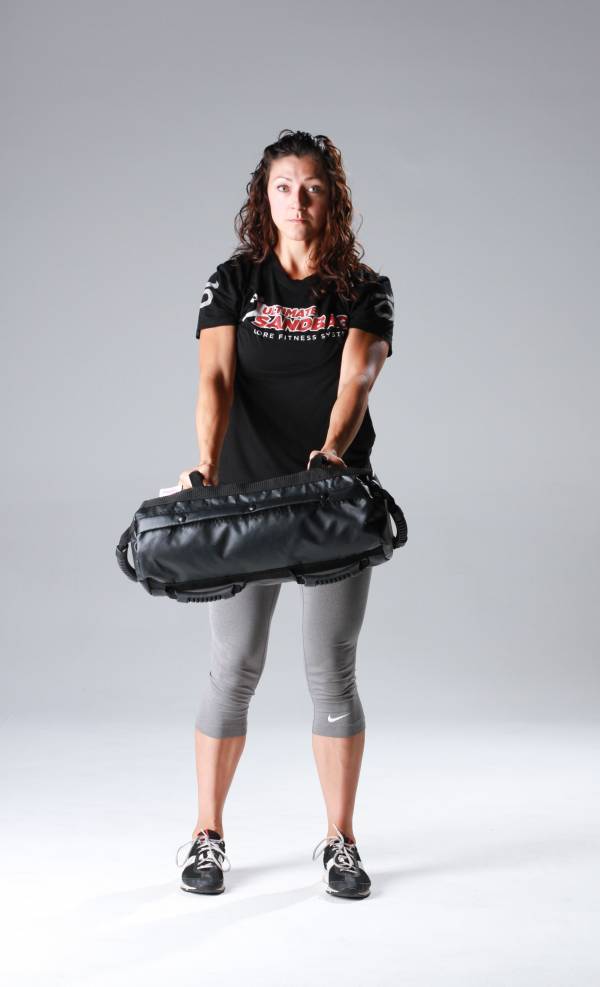 One of the most unusual of sandbag training drills, the Rotational Lunge completely changes how we see strength exercises. Where most lifts are relatively predictable and the movement of the weight is easy to groove, the Rotational Lunge is the complete opposite. The Rotational Lunge is a high velocity exercise that has the lifter work from an unstable body position with a weight moving at a high speed. Additionally, the weight moves around the body, not in a normal “up and down” trajectory.
One of the most unusual of sandbag training drills, the Rotational Lunge completely changes how we see strength exercises. Where most lifts are relatively predictable and the movement of the weight is easy to groove, the Rotational Lunge is the complete opposite. The Rotational Lunge is a high velocity exercise that has the lifter work from an unstable body position with a weight moving at a high speed. Additionally, the weight moves around the body, not in a normal “up and down” trajectory.
The term “rotational” is referring to the movement of the sandbag around the body, making this a very powerful anti-rotational movement. The velocity and leverage that the sandbag creates requires a great deal of deceleration strength, so if programmed right, the Rotational Lunge can be not only beneficial for strength and metabolic training, but injury resistance as well.
How can you get more out of the Rotational Lunge?
- Even though we often teach the Rotational Lunge as a swing type movement, you can also slow down the speed and use higher loads to create more of a very unique deadlift type of training. (Men: 80-100 pounds, women: 50-70)
- Going high velocity and think you got it down? You don’t have to even move up in weight to create a new challenge. Simply take the same weight into a larger sandbag. This will create new levels of instability due to the increased movement of the sandbag.
Half Moon
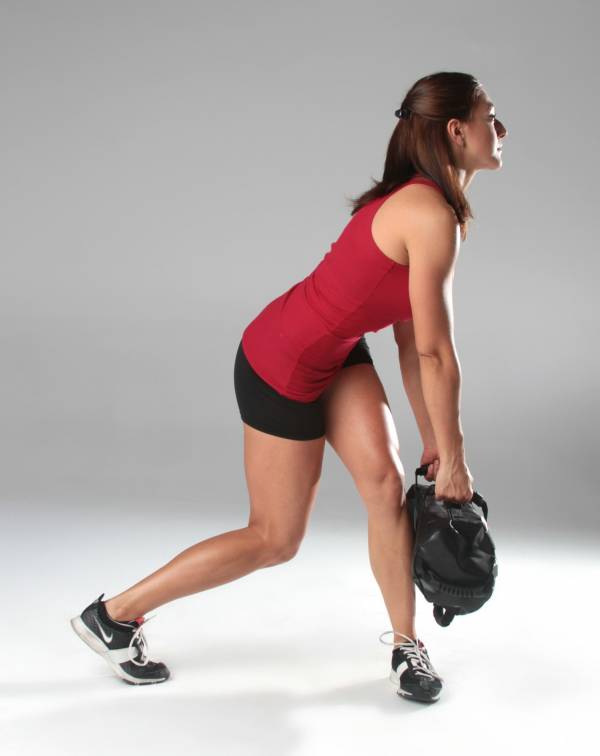
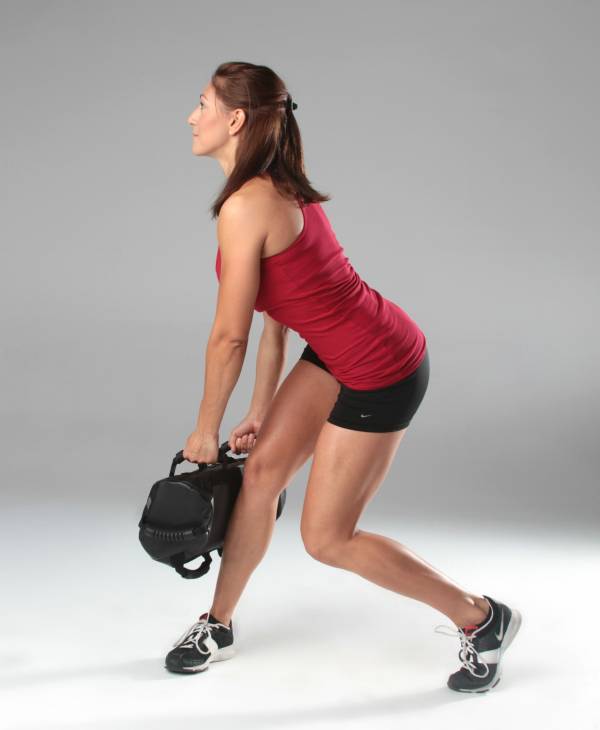 If you are looking to use sandbag training to enhance other training then you don’t want to just replicate the lifts you do in your typical training. Instead you want to “fill in the holes.” Meaning, perform movement patterns and load the body in ways you don’t with your standard training.
If you are looking to use sandbag training to enhance other training then you don’t want to just replicate the lifts you do in your typical training. Instead you want to “fill in the holes.” Meaning, perform movement patterns and load the body in ways you don’t with your standard training.
The Half Moon, like the Rotational Lunge, definitely fits the bill. One of the greatest weaknesses in most strength training programs is the lack of working in different planes of motion. The old saying, “if you don’t use it, you lose it” is very true about our bodies and its ability to produce movement. Working in different planes is how you become more “functional” as the coordination and emphasis of different muscles change.
One of the most neglected planes of movement is the transverse plane. Rotation is important for increased performance, but also preventing injury. Most sporting actions require varying levels of rotation, yet strength training is often only very linear. That means our training is not as functional as we think. Most disc injuries also occur in flexion and rotation, so teaching lifters how to properly rotate is key in long-term back health and injury prevention.
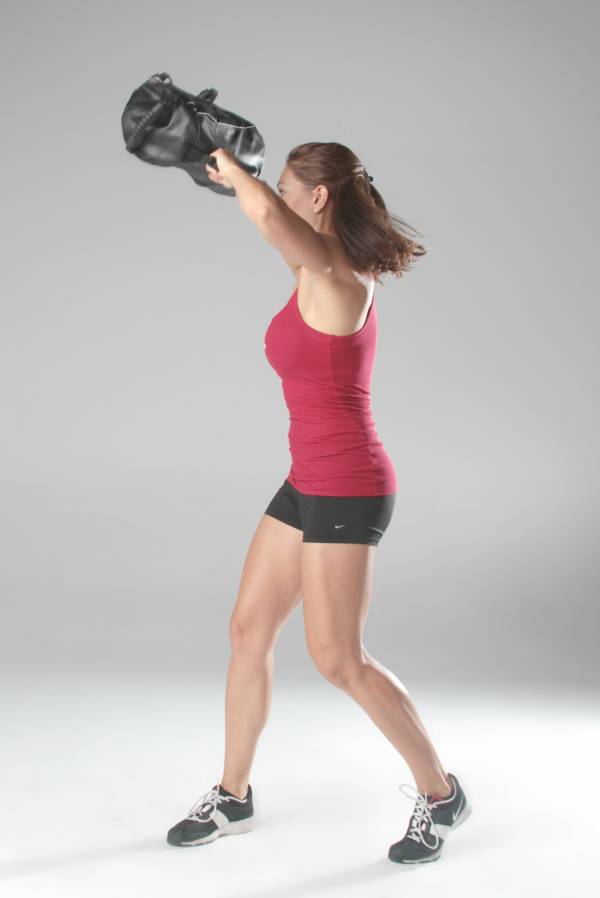
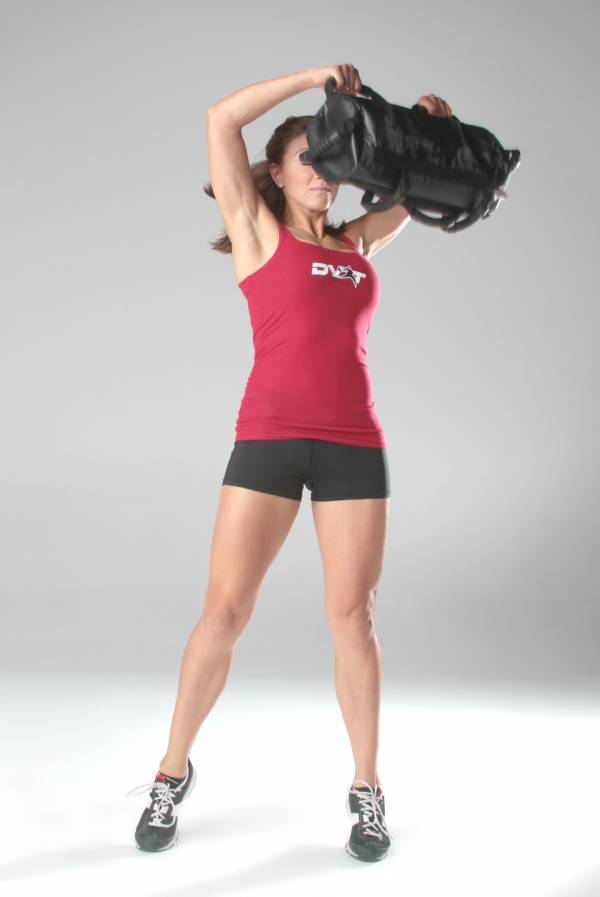 While some coaches throw in some token medicine ball or cable chopping actions, rarely is this movement prioritized. The benefit of the Half Moon is that we not only have the acceleration component like medicine balls, but more importantly a strong deceleration phase. Since deceleration is where we see the most injuries, learning to perform this phase of training in another plane of movement is critical.
While some coaches throw in some token medicine ball or cable chopping actions, rarely is this movement prioritized. The benefit of the Half Moon is that we not only have the acceleration component like medicine balls, but more importantly a strong deceleration phase. Since deceleration is where we see the most injuries, learning to perform this phase of training in another plane of movement is critical.
How do you get more out of the Half Moon?
- Since rotation (especially explosive rotation) can be challenging to learn, we can change the load by not just how heavy we lift, but how high we lift the sandbag.
- Instead of quickly rotating from side to side, pause for a two count in between repetitions to remove some momentum and focusing on starting strength.
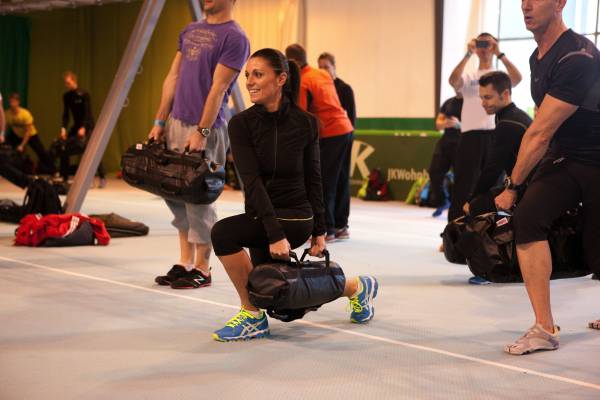 Hard to believe just three drills could justify the use of sandbags, but these aren’t your ordinary drills. Truth be told there are many others, but I want you to actually use some of these drills. We can talk theory all day, but feeling and seeing the impact of these exercises will open your mind about the possibilities of sandbag training. Don’t take my word for it rather one of the industry leaders, Alwyn Cosgrove, who recently wrote, “the future of resistance training is likely to be asymmetrical and ‘alive.’”
Hard to believe just three drills could justify the use of sandbags, but these aren’t your ordinary drills. Truth be told there are many others, but I want you to actually use some of these drills. We can talk theory all day, but feeling and seeing the impact of these exercises will open your mind about the possibilities of sandbag training. Don’t take my word for it rather one of the industry leaders, Alwyn Cosgrove, who recently wrote, “the future of resistance training is likely to be asymmetrical and ‘alive.’”






